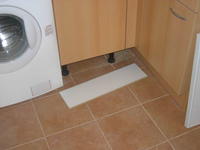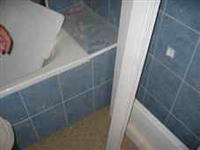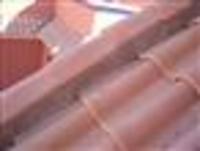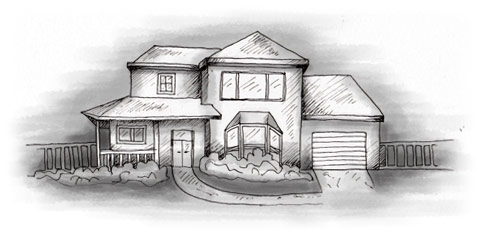In 60-80% of cases there are only minor things to get fixed on a new build, so a sharp eye and a bit of experience can suffice. The bad news is that sometimes the only way to find out there are serious problems is to have a professional inspection! One thing to bear in mind is that professional property investors would never complete on a non-inspected build. There is no substitute for professional (I am a biased after all) inspection when it comes down to a problem build, it takes some experience to check all of the average 650 inspection points. If you are worried after your own inspection or have just completed, remember it is never too late to call in professional help.
The specification (memoria de calidades)
If you have a list of what is included in the purchase of your property then you will be better prepared to inspect. Are the access roads complete? Is there an external area that has to be finished to a certain standard? Is there a pool or a communal pool? Is there a furniture package? Is it complete and does everything work?

Often furniture packs can include everything from fully furnished to just the white goods. It needs to be complete and in shop condition. If it is meant to do something, like a fridge that refrigerates or a washing machine that washes, check it. This might sound obvious, but sometimes the most obvious things get skipped. Everything needs to be checked and up to spec before you complete. Never be pressured into completing until you are happy.
If the spec and the property do not match, you cannot be penalised for refusing to complete. I will say that again, if your new home is not complete according to the specification of the property you are buying, you cannot be forced to complete. If in doubt and have not already done so, find an independent lawyer who specialises in property to help you out (make sure you ask that they are not contracted to any party involved in your new property). Understand that the agent, property developer and builder all get paid when you pay so they are more than motivated to move that point in time forward as quickly as possible. Some may apply undue pressure. Keep cool, you may be in a foreign country, but Spain is not the ‘wild west’ it may have been 30 years ago. There are professionals ready to help and take your side.
Make sure you’re ready before inspecting
Ask if you can mark any defects with permanent pen or use masking tape. Draw a plan of the rooms in the property and name or number them. For example, a common problem would be to list defective tiling in a bathroom, then have the builder report back saying all is OK. Whether they checked the other bathroom (where the tiles were fine) by accident or on purpose may be difficult to work out! One thing is for sure, unclear communication can get in the way of getting your problems fixed. Provide a clearly labelled plan so confusion cannot be ‘claimed’ later.

A digital camera is a good idea. Record defects and then you can send images by email or on CD. If you've inspected and returned to the UK, confusion over a defect can be more easily sorted out by emailing a picture with a description. This is quicker than posting a photograph and waiting.
Having the right equipment is vital for a thorough inspection. A bucket is fairly easy to find on a building site, so you might be able to grab it to check drainage. New houses rarely have lights fitted so you will need a torch. There are other bits and pieces of equipment that are useful for different situations, such as a spirit level, cleaning products and a pair of binoculars.
Before a house is complete it will literally be a building site. It will be dirty, dusty and have grout, paint and protective coverings all over the place. How can you check the stainless steel sink is not scratched if it is not clean? Having the necessary equipment and cleaning off important areas will answer these questions.
Get equipped
Though they make beautiful tiles in Spain, getting them laid properly is more problematic. Use a spirit level to ensure the tiles are properly laid. Pay special attention around sinks and toilets where the tiles may have been cut to fit. If they have not been cut correctly, they may not have been laid properly.

Use binoculars to check the roof. Tiles can be poorly fitted and standing well back and checking roof tiles through binoculars may show up problems. You need to make sure that the tiles have been put in place correctly and that none of the cement bonding them together is missing. Crawling across the roof of your dream home is not recommended, unless you know exactly what you are doing.
More specialist equipment, such as voltmeters and earth bonding measurement devices, are probably beyond what an amateur will have access to. The electricity supply from wall sockets can be checked using as mains supply car inspection lamp (note, this will not check the quality of the supply, just that there is one). Earth bonding is the earth connection from all the pipes throughout the house.
By Roy Howitt, MD www.inspectahomespain.com
Spain Tel: 965 319 743 - Mobile: 627 955 748
UK Tel: 0844 738 068


